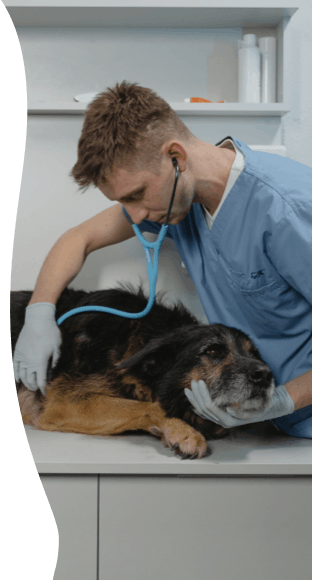Are Garden Mums Toxic To Horses
What is Chrysanthemum Poisoning?
The chrysanthemum is an herbaceous plant native to Europe and Asia that includes over 500 different cultivars ranging in small and dainty to large and showy. There are thousands of color and style combinations with some round flowers, some button-like, and others are shaped like daisies. There are two main varieties which include exhibition type and garden hardy. They are all poisonous and can cause skin irritation, gastric distress, neurological damage, and may result in kidney, liver, and pulmonary congestion.
The flowers, stalks, and leaves of the chrysanthemum (mum) are all toxic to horses, causing neurological, topical, and digestive irritation if eaten. There are several toxins in the chrysanthemum, which include sesquiterpenes, lactones, pyrethrins, and alantolactone. If not treated, continued consumption can cause lesions in the intestinal system, lungs, kidneys, and liver. This can be dangerous and possibly fatal. The neurological effects are similar to the effects of Parkinson's disease such as shaking, rigid muscles, and lameness.
Vet bills can sneak up on you.
Plan ahead. Get the pawfect insurance plan for your pup.
Compare plans

Symptoms of Chrysanthemum Poisoning in Horses
The symptoms of chrysanthemum poisoning are varied, depending on the amount your horse has consumed. The toxins are cumulative so even if your horse has only been eating a small amount daily, the damage keeps building up until symptoms show up gradually. You may not notice anything until a large amount of poisons are already built up in your horse's system and there is no antidote. Some of the most common signs to look for are:
- Diarrhea
- Drooling
- Skin irritation and lesions
- Incoordination
- Involuntary muscle movements
- Shaking
- Agitation
- Nervousness
- Colic (abdominal pain)
- Inability to get up
- Depression
- Kidney and liver damage (yellowing of mucous membranes, fluid retention, sleepiness, weakness)
- Blindness
- Coma
Types
The botanical name of Chrysanthemum is Chrysanthemum spp. from the Compositae family. There are hundreds of varieties and common names such as:
- Chrysanthemum pacificum
- Chrysanthemum japonense
- Chrysanthemum indicum
- Chrysanths
- Daisy
- Dendranthem
- Leucanthemum
- Mum
- Pyrethrum
Top
Causes of Chrysanthemum Poisoning in Horses
- Sesquiterpene is a terpene found in plants that affects the central nervous system and causes symptoms that resemble Parkinson's syndrome
- Lactones are acids found in plants that block the neurological signals and cause involuntary movements, disorientation, blindness, and coma
- Pyrethrins are natural insecticides commonly used in bug sprays and shampoo that cause central nervous system irritation
- Alantolactone irritates the skin and causes dermatitis
Top
Diagnosis of Chrysanthemum Poisoning in Horses
Because of the number of different toxins in chrysanthemums, detection and diagnosis may be difficult. It is best to call a veterinary professional right away if you suspect your horse has been eating chrysanthemums, even if there are no symptoms yet.Have a part of the plant available to help the veterinarian determine what toxins are affecting your horse. Locate your horse's medical and vaccination records and be prepared to give your veterinarian all the details of the suspected ingestion of the plant. The toxic symptoms do not usually show up in an acute fashion unless a large amount was eaten all at once, so many of the symptoms may have been overlooked or thought to be from something else.
A physical assessment will be performed right away and will include a thorough examination of the skin and coat, palpation and auscultation of vital muscles and organs, lameness examination, and vital signs. Since diagnosis is difficult, the veterinarian will usually perform several laboratory tests to rule out other conditions. A urinalysis will be done to check the glucose and protein levels, specific gravity, and bacterial culture. Several blood tests are needed as well, including a complete blood count, blood gases, chemistry profile, bacterial and fungal cultures, packed cell volume, and blood urea nitrogen. In addition, the veterinarian may want to take x-rays to check for blockages or abnormalities in the body.
Top
Treatment of Chrysanthemum Poisoning in Horses
As with many poisonings, the treatments include decontamination, fluid and oxygen therapy, medication, and hospitalization. However, your veterinarian may have a different way of treating chrysanthemum poisoning since treatments may vary.
Decontamination
A gastric lavage will be done right away to remove as much of the plant particles as possible. The veterinarian will insert a nasogastric tube into the stomach through the nostril or mouth and warm water is used to flush the digestive tract. Afterward, charcoal will be given by mouth to absorb any leftover toxins.
Fluid and Oxygen Therapy
Fluid and electrolytes will be administered by intravenous (IV) line to help rehydrate your horse and improve circulation of the renal system. Oxygen is provided by face mask if needed.
Medication
There is no antidote, but there are several drugs that may be helpful in cases of chrysanthemum poisoning. Some of these include sodium sulfate, magnesium, diazepam or phenobarbital for convulsions, and stomach protectants for stomach irritation.
Hospitalization
The veterinarian will probably want to keep your horse for a few hours or overnight, depending on the seriousness of the situation. This is to keep him under constant observation and to offer emergency treatment if needed.
Top
Recovery of Chrysanthemum Poisoning in Horses
Your horse's recovery depends on the amount of chrysanthemum eaten and how he responds to treatment. If you obtained treatment right away, chances are good that he will recover with no complications. However, you should keep your horse under observation and let the veterinarian know if there are any changes.
Top
*Wag! may collect a share of sales or other compensation from the links on this page. Items are sold by the retailer, not Wag!.
Are Garden Mums Toxic To Horses
Source: https://wagwalking.com/horse/condition/chrysanthemum-poisoning
Posted by: binettewallard.blogspot.com

0 Response to "Are Garden Mums Toxic To Horses"
Post a Comment